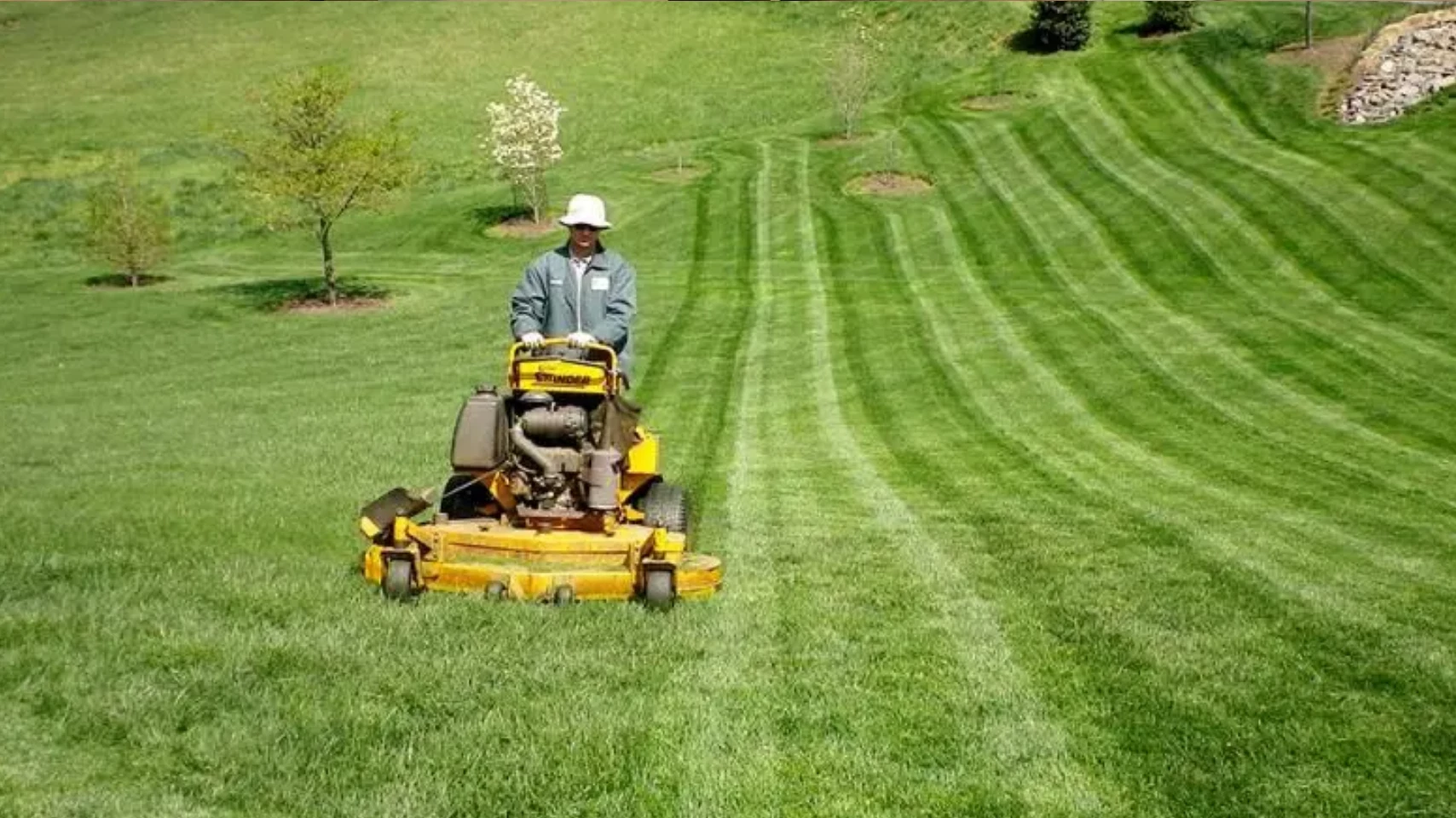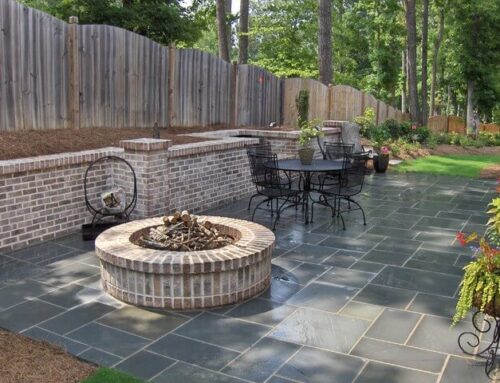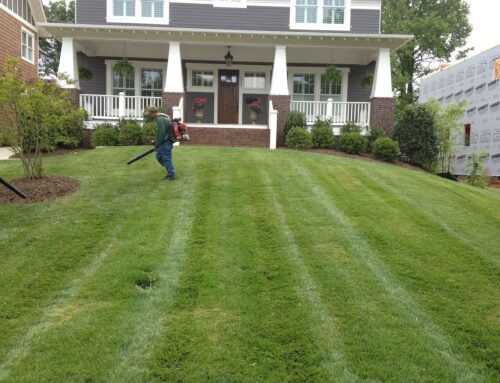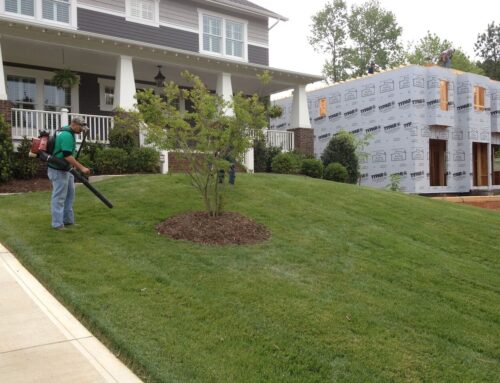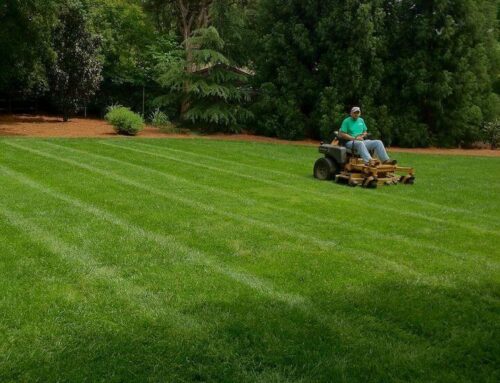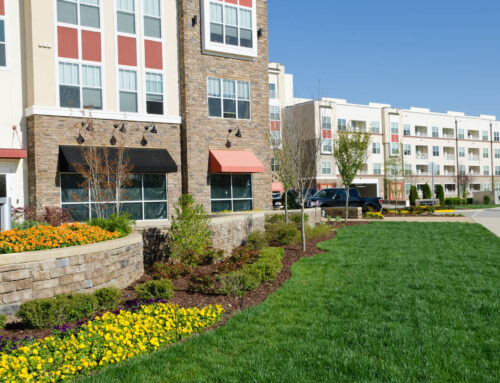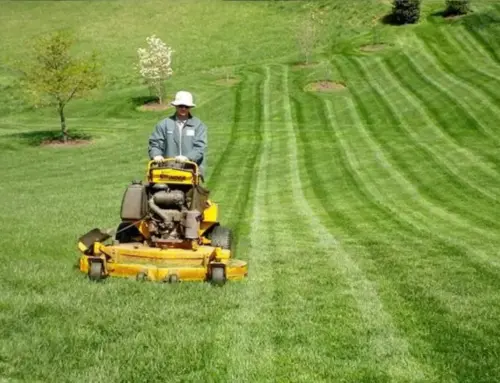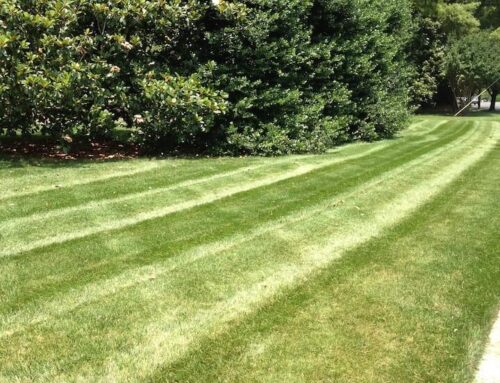Did you know that something as simple as mowing your lawn can play a role in cooling down your neighborhood? It’s true—how we care for residential lawns can make a difference in addressing urban heat islands, those hotspots in cities where temperatures climb higher than surrounding areas.
Well-maintained grass not only improves curb appeal but also helps reduce heat by providing shade, absorbing sunlight, and keeping the ground cooler. When we prioritize thoughtful lawn care, we’re contributing to a larger environmental effort to create cooler, more livable urban spaces.
What role does residential lawn mowing play in reducing urban heat island effects?
Residential lawn mowing is a key practice in managing urban heat island (UHI) effects, where urban areas experience higher temperatures than surrounding rural areas. Here’s how mowing contributes:
- Promotes Evapotranspiration: Regular mowing keeps grass healthy, encouraging evapotranspiration—a natural cooling process where water evaporates from grass, reducing ambient temperatures.
- Prevents Overgrowth: Overgrown lawns can trap heat and reduce the grass’s cooling efficiency. Proper mowing ensures that lawns function effectively as natural air conditioners.
- Reduces Heat Absorption: Managed lawns absorb sunlight and mitigate the heat-absorbing effects of impervious surfaces like asphalt and concrete, balancing urban temperatures.
- Supports Soil Health: Regular mowing fosters healthier grass roots, which improve soil quality and moisture retention, enhancing the lawn’s cooling properties.
- Improves Airflow: Shorter, well-maintained grass allows better air circulation near the ground, promoting a cooler microclimate.
- Enhances Green Space Efficiency: Mowed lawns maximize the cooling potential of green spaces, reducing the overall urban heat footprint.
- Captures Pollutants: Mowing maintains healthy lawns, traps dust, and pollutants, and improves air quality while contributing to urban cooling.
Residential lawn mowing is vital in mitigating UHI effects and creating cooler, more sustainable urban environments by maintaining grass health and optimizing green space functionality.
How does grass height impact the efficiency of urban heat island mitigation?
Grass height plays a critical role in determining the efficiency of lawns in mitigating urban heat island (UHI) effects. Here’s how:
- Optimal Cooling Through Evapotranspiration: Grass maintained at an optimal height (usually 2.5–3.5 inches) maximizes evapotranspiration, where moisture is released from the blades into the atmosphere, creating a natural cooling effect.
- Prevents Overgrowth: Overgrown grass traps heat and reduces air circulation near the surface, diminishing its ability to cool the surrounding environment. Proper mowing ensures grass remains an effective cooling agent.
- Encourages Root Health: Grass cut at the right height promotes deep root growth, which enhances soil moisture retention and supports consistent cooling.
- Avoids Stress on Grass: Cutting grass too short (scalping) weakens it, reducing its capacity for evapotranspiration and making it more prone to heat stress and damage.
- Enhances Airflow: Shorter, healthy grass allows for better air movement across the lawn, contributing to a cooler microclimate and minimizing trapped heat.
- Balances Sunlight Absorption: Properly maintained grass absorbs sunlight efficiently without creating excessive heat buildup, helping balance urban temperatures.
Maintaining grass at an optimal height ensures it remains a functional, sustainable tool for reducing UHI effects and promoting cooler, greener urban spaces.
Why is lawn care important for controlling urban heat island temperatures?
Lawn care is vital in mitigating urban heat island (UHI) effects by maintaining healthy green spaces that naturally cool urban environments. Here’s why it’s important:
- Promotes Evapotranspiration: Well-maintained lawns release moisture through evapotranspiration, reducing surface and air temperatures in urban areas.
- Improves Soil Health: Regular lawn care, including mowing and fertilizing, strengthens grassroots, which enhances soil moisture retention and cooling capacity.
- Reduces Heat Absorption: When properly maintained, grass reflects less heat than hard surfaces like asphalt and concrete, lowering overall urban temperatures.
- Maximizes Cooling Efficiency: Consistent mowing keeps grass at an optimal height, ensuring efficient evapotranspiration and preventing heat buildup from overgrown vegetation.
- Supports Air Quality: Healthy lawns trap dust and pollutants, improving air quality while contributing to the cooling effects in urban areas.
- Proper irrigation and care minimize heat stress on the grass, ensuring that grass remains functional and effective in mitigating heat.
- Enhances Green Space Performance: Regular care ensures lawns contribute fully to UHI mitigation, making them efficient tools for cooling and urban sustainability.
Investing in lawn care ensures green spaces effectively reduce urban temperatures, promoting cooler, healthier cities.
Can residential lawn mowing practices help improve urban climate conditions?
Residential lawn mowing practices play an important role in improving urban climate conditions by enhancing the functionality of green spaces. Regular mowing keeps grass healthy and encourages evapotranspiration, where moisture is released from the grass into the air, naturally cooling the surrounding environment.
This effect helps counteract the urban heat island (UHI) phenomenon, where cities experience higher temperatures due to heat-absorbing surfaces like concrete and asphalt. Properly mowed lawns also reduce heat retention by maintaining optimal grass height, ensuring the grass remains efficient in cooling urban spaces.
Additionally, consistent lawn care improves air quality and supports soil health, which is essential for a balanced urban ecosystem. Short, well-maintained grass traps dust and pollutants, improving air in densely populated areas. Healthy lawns also promote better soil moisture retention, which aids in reducing surface temperatures and mitigating the heat reflected from nearby impervious surfaces.
By integrating residential mowing practices into urban climate strategies, communities can create cooler, greener environments that support sustainability and improve overall quality of life.
Let’s Help You Maintain Your Lawn for Urban Sustainability!
At Performance Lawn & Landscape, we believe in the power of well-maintained lawns to combat urban heat island effects and promote sustainable communities. Regular lawn care keeps your yard looking great and helps cool the environment through natural processes like evapotranspiration. Our expert team ensures your lawn stays healthy and efficient, reducing heat absorption and improving air quality.
Maintaining your lawn contributes to a greener, cooler, and more sustainable urban landscape. Let us help you make a positive impact—schedule your lawn care service with Performance Lawn & Landscape today and start cooling your community!

